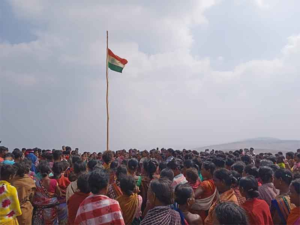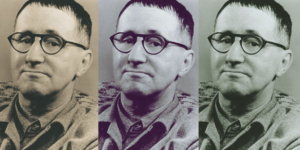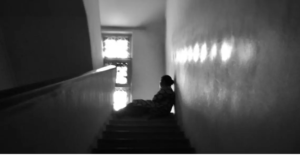Reams of literature have been generated on the healing traditions among the indigenous communities the world over. The healing practices of local healers is known by a variety of nomenclatures. In the global literature the phrases like ‘indigenous healing tradition’; local healing tradition’; ‘shamanism’; ‘ritualistic healing’ and many such terms denote the healthcare provided by the practitioners who come from outside the folds of conventional systems of healthcare provisioning.
Challenges of recognition and efforts to mainstream them have been the concern of a variety of disciplines and institutions, which have lobbied for the cause and inspired the advocacy groups to intervene in the machinery of governance. The existing discourse on such practices and practitioners almost unreservedly has patronized these practitioners and their systems, and has offered their patronage in bringing the practitioners of indigenous or local healing traditions within the fold of the larger realms of healthcare provisioning.
Modern public health owes its genesis to industrial revolution and colonial past. In order to search ways to secure health and prevent disease in the population, public health evolved through trial and error as scientific and technological development fed the medical knowledge, often stimulated by war and natural disasters. Thus, scientific and technological advancements assumed an essential space in provisioning of the healthcare services.
Although science and medical technology provided the base for public health, social values have shaped the system continuously. The task of the public health agency has been not only to define objectives for the healthcare system based on facts about illness and health, but also to find means to implement health goals within a social structure.
The boundaries of public health have been changing over time with newer idea(s) about health. Taking cognisance of the changing social norms, political and economic, and ideological shifts within the government, public health has been engaged with identifying health problems, developing knowledge and expertise to solve problems, and rallying political and social support around the solutions.
Despite successful scientific endeavours, social reforms and phenomenal initiatives by the state to address public health issues, there has been a conscious tilt away from the indigenous and local systems of healing and healthcare.
The indigenous and local healing and healthcare traditions have been prominent in knowledge domains historically, as well as for commercial purposes in the recent past. Various disciplines — sociology, medical geography, anthropology, ethnobotany, pharmacology, and industry, pharmaceutical in particular — have engaged themselves with traditional knowledge and traditional healing within their scope.
Traditional knowledge of healing and healthcare practices vis-a-vis modern knowledge create the jurisdictions in which indigenous communities become sites of indigenous knowledge, while the practitioners of modern medicine the torchbearers of ‘scientific’ knowledge of health care.
On the one hand is the transmission of lived experiences of practising healing and healthcare from one generation to the next, resting on living traditions and livelihoods processes, on the other is the domain of modern knowledge of healthcare (minus ‘healing’), relying on the training received over a time span spreading from five to seven years.
Indigenous healing, or local healthcare traditions, remain an important dimension of health and healing across the globe. However, there is a lingering sense of undermining their importance in more than one way. Indigenous and local health traditions are part of the ecosystem and are community specific. Their health and well-being concepts and practices are highly embedded in local worldviews and value systems. Their understanding is significant when contextualized in a bio-cultural and an ecosystem perspective.
The basic tenets of modern public health claim to provide solutions in consonance with social structures and their dynamics. Despite this, it has taken a fairly long time for it to acquire its due place to the healing and healthcare practices which emanate from indigenous and local knowledge traditions.
The assumption that scientific and technological components make modern medicine superior to the already existing indigenous systematic traditions of healing and healthcare has dominated the fervour of modern public health. The uneven positions assigned to the two systems — modern healthcare and indigenous or local healthcare — have favoured the former in demarcating the scope of modern public health.
In spite of the recognition that socio-cultural and economic conditions are instrumental in not only determining, but also addressing health inequalities, way back in 1946, the Health Survey and Development Committee, better known as Bhore Committee took nearly five decades to ensure that the state makes efforts towards bringing the ‘indigenous’ closer to the ‘modern’.
The Department of Indian Medicine and Homeopathy was established in 1995. It was renamed AYUSH (Ayurveda, Yoga, Naturopathy, Unani, Siddha, Homeopathy and Sowa Rigpa) in 2003 with the aim to reduce diseases and improve people’s mental, physical, and spiritual health.
Subsequently, the department of AYUSH was turned into the Ministry of Ayurveda, Yoga and Naturopathy, Unani, Siddha and Homeopathy (AYUSH) with focused attention on development of education and research in ayurveda, uoga and naturopathy, unani, siddha and homoeopathy systems. The Central Council for Research in Ayurvedic Sciences (CCRAS), became the apex body for research in ayurveda under the Ministry.
While the Ministry has catapulted the AYUSH systems, and pharmaceutical industry has provided the much-need booster, the indigenous and local traditions practitioners of these systems have remained marginalised, despite the Ministry’s mandate of holistic healing.
Civil society organizations and healers’ networks have been advocating to bring the indigenous and local healthcare traditions into the main fold of healthcare provisioning. There is an evident hierarchy which positions indigenous and local at the lowest rung. But the allopathic medicine continues to create distrust in indigenous and local healthcare tradition systems. This has accentuated the gap between the two, with many left without care due to inaccessible regimes of the allopathic systems of medicine.
The infusion in the minds of the people that ‘local’ and ‘indigenous’ as non-scientific, and in need of ratification by the ‘global’ allopathy, is not only pushing the local and indigenous healing systems to the periphery, but also paved the way for what we are endorsing today as certification.
Certification indeed has enhanced the utilisation of the healthcare services from the indigenous and local practitioners, but there is a lingering question on the formats of public health systems which award certain powers to some selected systems few over the others.
It perhaps is a pertinent question to pose: Why certify a knowledge system which has existed from generations by a system which has a much recent history and much shorter training span? Do we acknowledge the knowledge hierarchy? Are knower and the non-knower both in the domains of healing and healthcare?
It is apt to think about those who engage in imparting healing and healthcare through indigenous and local traditions. Who are they? What is their social background? As evident from existing literature and oral documentations, most of them are from lower rungs of social hierarchy: the bone setters and the traditional birth attendants. They mostly belong to the scheduled communities.
Is it because of their low position in the social ranking which deprives them from the power and status bestowed on the practitioners of other system? Is it the power dynamics between the traditional healers and the allopathic care providers (as well as users)?
Or, because ‘knowledge’ has remained the preserve of the few at the higher social rung, the advent allopathic system of healing provided space for usurping the ‘knowledge’ from those to whom it belonged? Perhaps these questions are struggling to seek answers from various quarters — especially from those who claim concerns towards the indigenous and local healthcare traditions.
In the same realm, it is also important to note that the access to medical education is governed largely by the economic propensity, since the expenditure incurred in obtaining an MBBS degree is comparatively more than other graduate level courses in higher education. Within medical education, too, allopathic courses are more expensive than those in other systems. This disparity itself is likely to produce the hierarchical advantages and disadvantages among the learners who subsequently become the practitioners of the system in which they train.
The allopathic system reserves the highest pedestal for itself. The indigenous and local practitioners remain outside the fold of such learning process. Their knowledge is acquired through observation and hands-on practice. There is inter-generational transfer of knowledge.
It is well known that the traditional/local health practitioners remain a critical source of care globally. In Tanzania, more than 50% of the population frequently uses their services. With a severe shortage of orthopaedic surgeons (1:3.3 million Tanzanians) traditional bone setters could potentially expand access to musculoskeletal care and improve outcomes for morbidity as a result of trauma.
Similarly, the traditional birth attendants in remote parts of India have provided maternal and child health (MCH) care to the women in the areas where the conventional system has failed to reach. The knowledge vested in the Kani tribe of South India of the medicinal plant ‘arogyapaacha’ has been useful for manufacturing sports drug.
Certification perhaps heralds the shift in ownership of knowledge. It invokes the questions on the rights of indigenous and local health partitioners and their intellectual property rights. Can certification be compatible with the values and interests of larger communities to which such practitioner may belong? Is there the uneven power dynamics playing up between the ‘knower’ and the ‘non-knower’?
The ancestral knowledge of the indigenous and local healthcare and traditions has the potential to inculcate the ethos in multiple disciplines and bring to fruition a pluralistic approach to healthcare. It can also ensure the much-needed balance across modern and indigenous, including local, in achieving the United Nations Sustainable Development Goals, which aims at leaving no one behind.
(The author is Professor, Centre of Social Medicine and Community Health, School of Social Sciences, Jawaharlal Nehru University, New Delhi. Courtesy: Counterview, a newsblog that publishes news and views based on information obtained from alternative sources, which may or may not be available in public domain, allowing readers to make independent conclusions.)




